Feeding: Weaning and Your Baby’s First Foods
1. At What Age Should I Start Weaning My Baby off Milk?
Parents can start weaning your babies after 4-6 months of age to satisfy the nutritional demands of your growing child. Delaying it can increase the risk of feeding difficulties in your child later on and also result in him or her receiving an inadequate amount of nutrition. On the other hand, babies should not be weaned any earlier than 4 months of age as their bodily systems e.g. kidney and digestive system are generally not fully developed to process the foods and convert them into nutrients.
While breast and/or formula milk alone is enough to meet the nutritional needs of your babies when they are 6 months or younger, some infants might need to kickstart the weaning process earlier either due to suboptimal growth or mineral deficiencies e.g. iron, which could have other implications. This will be done under the guidance of a paediatrician or dietician.
2. How to Tell if My Baby is Ready for His/Her First Foods?
- Able to sit steady in an upright position with support and can hold head up (this aids in spoon-feeding)
- Able to chew and shift food from front to back of the mouth to swallow
- Stops sticking tongue out between the upper and lower set of teeth when swallowing
- Shows enthusiasm in food e.g. looking at your food or trying to take food from you
- Drools and puts items into the mouth more often
- Cries for his or her feeds before the usual feeding time (could be indicative of hunger)
3. Baby-led Weaning (BLW) or Traditional Weaning – Which is Recommended?
a) What is BLW and Traditional Weaning?
Babies are traditionally first introduced to solid foods via spoon-feeding them specially-prepared thin purées. Later, following their age and developmental progress, the foods offered to them gradually shift towards family foods. This is known as traditional weaning.
Baby-led weaning (BLW) is an alternative method of baby feeding that promotes infant self-feeding from 6 months of age, which differs from traditional parent spoon-feeding.
Although BLW is not specifically mentioned in the World Health Organisation (WHO) recommendations, it is becoming more popular among parents. The key features of BLW are that:
- Babies participate in family mealtimes
- ‘Whole’ (baby-fist size) pieces of food are offered to them
- Babies will be feeding themselves from the beginning of complementary feeding, at around 6 months of age
- Although the parents offer foods, the baby controls the weaning process (thus the term “baby-led”) in that he or she decides what, how much and how quickly to eat
b) How is BLW different from Traditional Weaning?
- The key difference literally lies in the difference of who leads the weaning process, the baby in BLW versus the parent in traditional weaning
- In traditional weaning, infants are offered puréed infant foods that are often made up of several ingredients; in baby-led weaning, a variety of single picked foods is offered to the baby.
- In traditional weaning, the tastes of single food items are mixed together and the child is not always able to distinguish them; conversely, the BLW approach might provide the child with an early and more stable learning about the satiating capacities of foods and therefore potentially enable a better satiety-responsiveness.
c) Is BLW better than Traditional Weaning?
There is currently not enough research evidence to confirm that BLW is able to provide an infant with sufficient nutrition compared to traditional weaning 1.
Some studies had observed that some babies on BLW ended up taking more milk and less solid foods as compared to babies on traditional weaning, which could lead to a lack of nutrients e.g. iron, for the child. Other studies also indicated that some mothers prioritized ease of feeding over nutritional recommendations i.e. choosing foods that can make their baby happier and helps the baby to sleep, which could also result in inadequate nutrition for the child, and sometimes poses safety hazards e.g. choking.
1 https://www.ncbi.nlm.nih.gov/pmc/articles/PMC5934812/
While there is no conclusive evidence on BLW, here are some practical advice from our paediatrician for parents who would like to follow the BLW approach:
- To wait until your baby is ready: healthy infants over 6 months of age are developmentally able to self-feed; however, strong chewing skills in some children may not be fully developed until 9 months.
- To inform and discuss with your family paediatrician about the approach, considering both risks and possible advantages
- To monitor with your paediatrician the growth parameters, especially during the first months of weaning and evaluating if supplementations are necessary (i.e. iron, vitamins, oligo-elements).
- Foods offered should be prepared to be picked up and easily held.
- Meals should be cooked from scratch, without any processed foods, salt or sugar. Cooking should be appropriate, e.g. cooking until food is soft.
- To include high-iron food, like small pieces of red meat.
- To introduce a variety of foods in a gradual manner to include a broader variety of textures, colours and shapes.
- To avoid hard foods, especially small and roundly shaped foods like nuts and grapes due to the risk of choking.
- To pay attention to your infant’s hunger and satiety cues and respond promptly.
- To ensure that your child should never be left alone with foods.
4. What are the Recommended Baby’s First Foods?
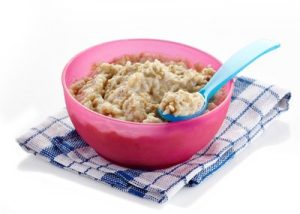
Iron-fortified cereal is a popular first weaning food item, which tends to be well-liked by many children, due to the great taste and the frequent addition of milk to it. In addition, it is rich in iron, just like spinach and red meat, which is very important for the cognitive and behavioural development of your child. Thus it is one of the important first weaning foods as well. Your infant can start off with having it once a day for a few days, before increasing to twice or even thrice a day.
The other very popular weaning food item is pureed pumpkin, which is naturally sweet and tasty. It is rich in beta-carotene and many other nutrients important for the growth and development of your child.


Other recommended first foods include pureed spinach (for its iron content and fibre to promote bowel movement), pureed carrots and papayas (both of which are rich in carotene and high in fibre), and pureed potatoes (it is a complex carbohydrate which can promote satiety yet not cause excessive spikes in sugar levels in your child).
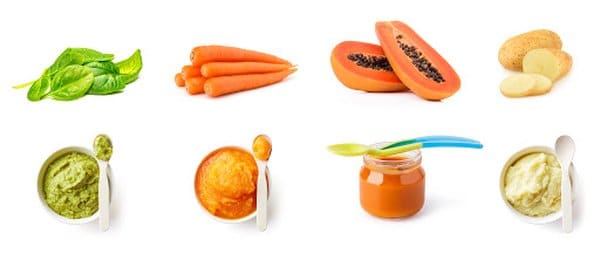
All the above baby’s first foods should be boiled (ensure fully cooked) and then pureed to a consistency that is slightly thicker than milk. (*Tip: if the food keeps it shape on a spoon, it is not smooth enough for your baby’s consumption) In terms of seasoning, avoid any form of seasoning at the start.
Tip: When introducing a new food, always do it one at a time, keeping a gap of 3 – 4 days between. If any undesirable reactions to the food happen e.g. vomiting, diarrhea etc., note it down and check with your paediatrician before trying again.
5. How Much Milk does My Baby Need During Weaning?
The proportion of milk to solids will depend on your baby’s age and also his or her development pace. The consistency of the foods introduced will also change with time. Here is a simple guide by age:
- 6 months
At the start of the weaning process, you can swap out 1 milk feed with solid foods. Once your baby is used to being fed with solids, you can now slowly increase the number of solid feeds to 2 times a day. At this age, milk should still be your child’s main source of nutrition and the total amount of milk (either breast or formula) should be maintained at minimally 100ml/kg/day. Food at this stage must be pureed to a very smooth texture, with no seasonings added. Try to keep to food that can be easily digested at this stage e.g. spinach, pumpkins, potatoes.
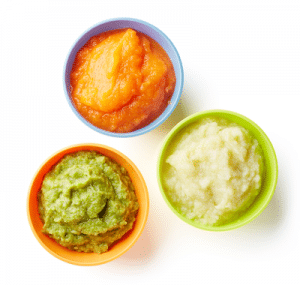
- 7- 9 months
Now, your baby will be having up to 2-3 meals with solid foods per day, thus the milk feeds can be cut down by 2 feeds if your child is taking the solids foods well. During this age, especially after 8 months of age, your baby’s food can be of a thicker consistency, so that he or she can practise chewing. This is an important development milestone for your baby, in terms of building his or her oral muscles and function. Some of the foods that can be introduced include thick lump porridge with lumps of mashed meats, as well as lumpy mashes of apples/pears/bananas.
As your baby becomes more accepting and starts to enjoy solids, you can even give him or her finger food to further develop chewing function and encourage your child to feed on their own. But always to remember to supervise them while eating.
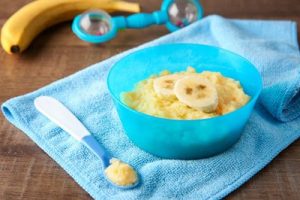

- 9 months and above
Your child should be having 3 meals a day, thus the milk feeds can be cut down by 3 feeds if your child is taking the solid meals well. Food does not need to be in the blended state anymore. You can try giving your child minced food or chop them into fine pieces. Seasoning should still be kept to a minimum.
The objective is to increase your baby’s exposure to different foods to firstly ensure they meet their nutritional demands and to prevent fussy eating behaviour later on. When your child turns one, you can allow him or her to eat what the rest of the family eats. Separate preparation of baby food will no longer be required.
To facilitate your meal planning, here is a sample menu based on age:
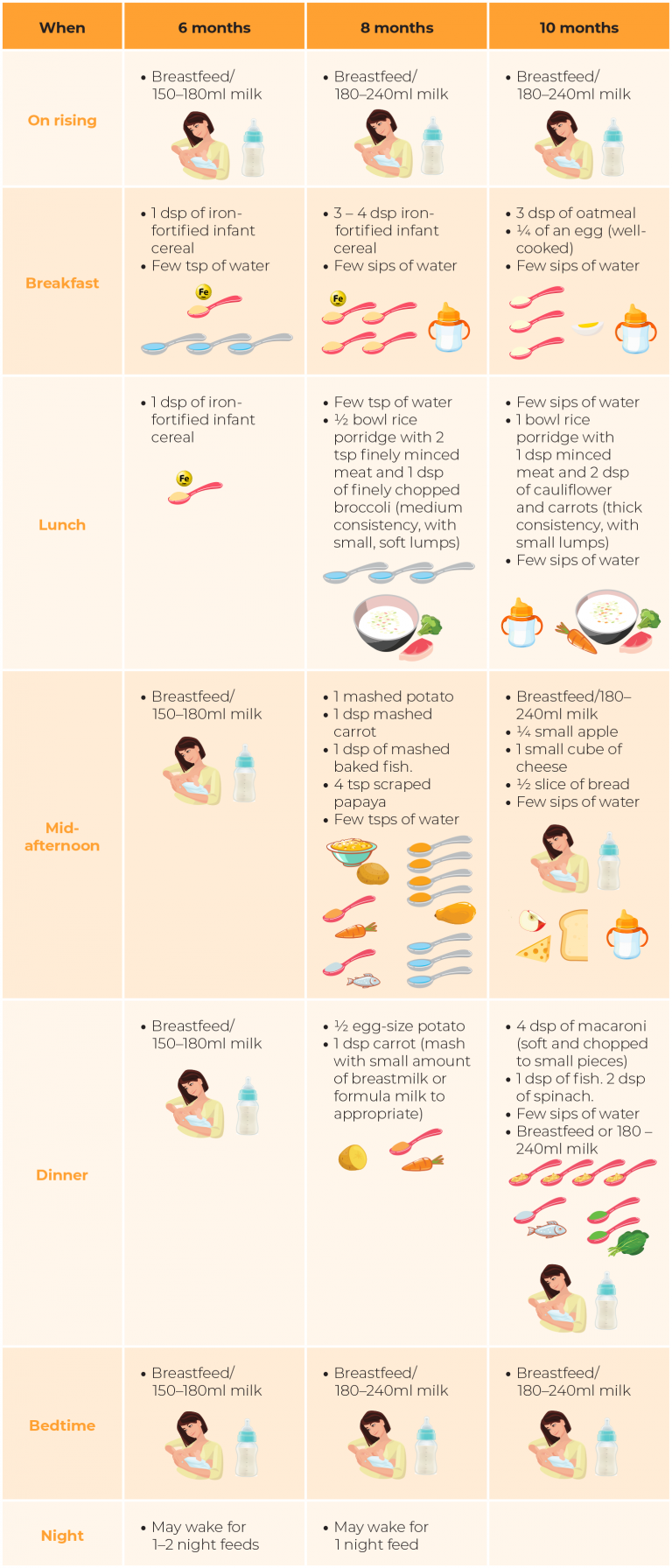
6. Can I Prepare My Baby’s Weaning Meals in Advance?
Busy parents might like to prepare their children’s meals in batches in advance so that they can be conveniently re-heated at mealtimes. However, some important food hygiene points should be noted to prevent incidences of food poisoning:
- Meals can be prepared in advance but refrigerate the pre-prepped meals promptly and properly to minimize bacterial contamination
- When reheating the meals, ensure the food is thoroughly boiled. If the food is microwaved, stir well and test the temperature to avoid certain portions of the food being heated insufficiently
- Unfinished food that has been touched by your baby should be thrown away
- When preparing meals, remember to always separate raw and cooked food and cook all meat thoroughly
Our Paediatrician’s Tips to Make the Weaning Process Easier:
- Have patience with your baby, expect that you will need more time for feeding, especially at the initial phase.
- Set your expectations on messiness while feeding. Try not to wipe your baby too often during feeding.
- Go with your baby’s pace i.e. offer food when he or she opens his mouth. If he refuses, you can always try again later or on a different day when your baby is in a better mood. Do not force-feed.
- Try with small quantities of food at the start and increase when your baby shows acceptance.
- Do not be discouraged if your baby rejects new food types or tastes. Rejection does not mean a permanent dislike. Babies are known to take 15 or more exposures to accept a new taste.
- Most importantly, try to be relaxed – mealtimes should be a happy time for both parent and child! Do not compare your baby’s progress to others, we are all different.

